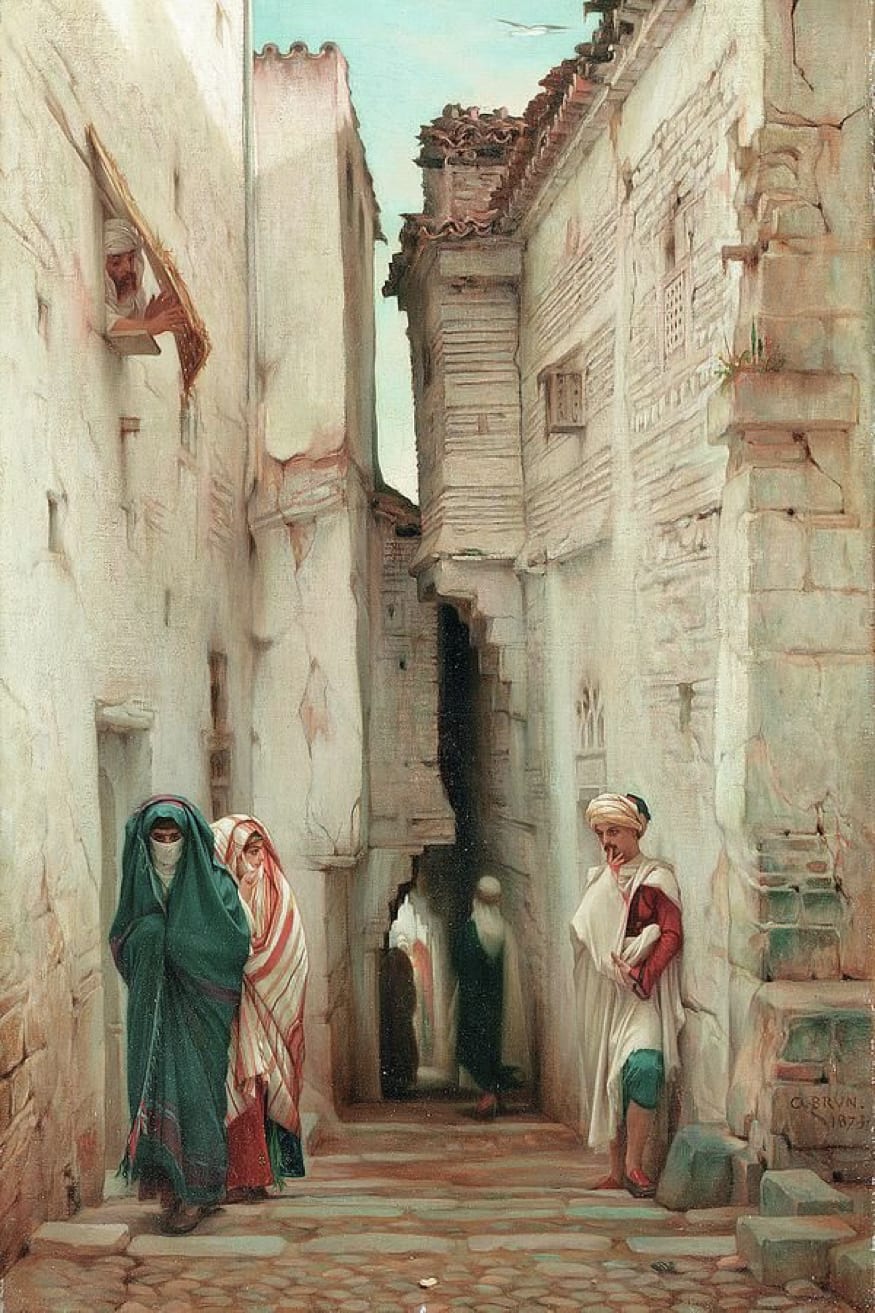Guillaume-Charles Brun (1825 - 1908)
Study for a street scene in Constantine: a woman in a niqab, with her arms folded
Signed lower right: Ch. Brun
White, red and black chalk on blue paper
43 x 23.5 cm. (17 x 9 ¼ in.)
Study for a street scene in Constantine: a woman in a niqab, with her arms folded
Signed lower right: Ch. Brun
White, red and black chalk on blue paper
43 x 23.5 cm. (17 x 9 ¼ in.)
Provenance:
By descent in the family of the artist until 2020.
This striking sheet, depicting a woman wearing a white niqab, is a study for Guillaume-Charles Brun’s 1873 painting of an Algerian street scene, offered at Sotheby’s in 2002 (fig. 1). In the painting itself, imbued with a sense of ambiguity typical of Brun’s work, two women navigate a narrow street in the city of Constantine, while a turbaned man looks on. The sheet is in fantastic condition, with Brun’s confident graphic style maintaining its strength and sense of volume. The distinctive blue paper was no doubt chosen to reflect the turquoise colour used for the lady’s jibāb, the loose outer garment which covers the head and body.

Fig. 1, Guillaume-Charles Brun, A street scene in Constantine, Algeria,
signed and dated 1873, oil on canvas, 53 x 35 cm, Private Collection
Born in Montpellier, like his friend Alexandre Cabanal, Brun went to Paris at the age of 22 and was accepted as a student at the École des Beaux-Arts in 1847, where he won a medal in the school’s exhibition of that year. Upon Cabanal’s recommendation, Brun joined the studio of François Picot, where his talents began to flourish, exhibiting regularly in the Salon from 1851 onwards, initially showing genre works and then, from 1853, more regularly Orientalist paintings. In 1859 Brun exhibited three paintings at the Salon depicting scenes from everyday life in Constantine, a city often preferred by the French artists who regretted the Europeanisation of Algiers and who sought out a more authentic vision of North Africa. From 1859 until the end of his life, images of the narrow, ancient streets of the city and its colourful inhabitants, often engaged in perhaps overly romanticised activities, became a theme of predilection for Brun, who was appointed President of the Société des artistes français in 1883.
